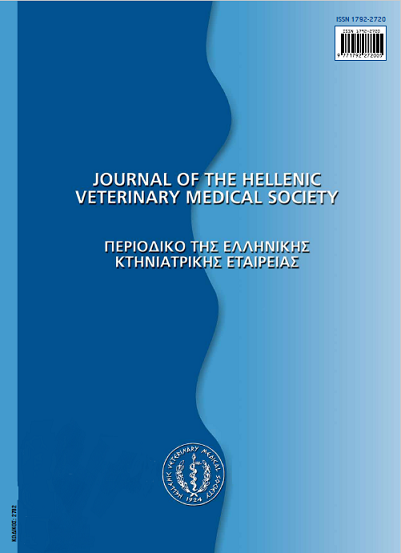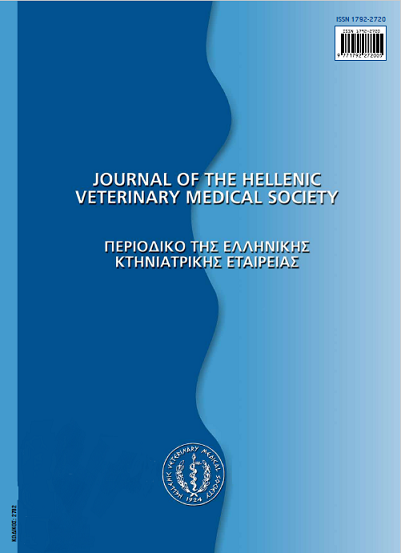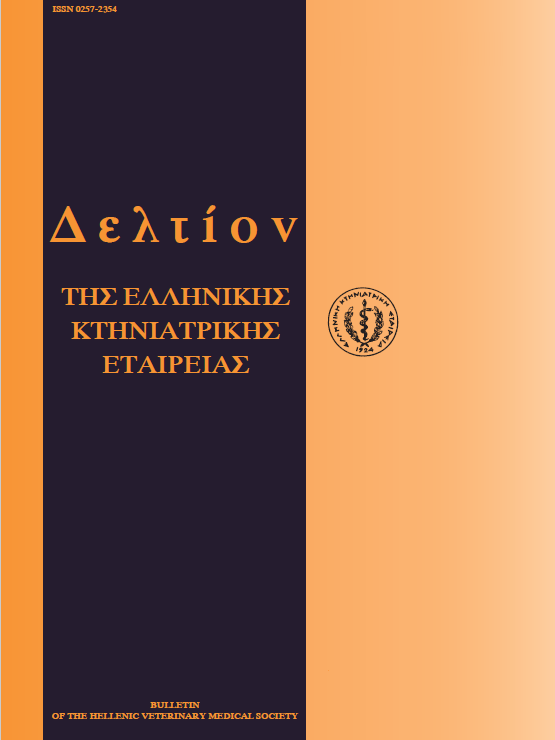Prevalence of Salmonella infection in pigeons, canaries and psittacines
Résumé
During the last decade, 618 pigeons, 182 canaries and 71 pcittacines, from Thessalonica greater area were examined in the Clinic of Poultry Diseases. Post mortem examination was performed in all birds and samples were collected from the liver, spleen, heart and intestine for bacteriological examinations. Blood agar (5% sheep blood), McConkey agar and Selenite broth were used for culturing suspect material. Serological and biochemical tests were performed from colonies grown on agar plates. Salmonella isolates were serotyped at the "Salmonella - Shigella National Research Center" in Athens, Greece. Salmonella was isolated from 53 out of 618 pigeons (8.6%), 33 out of 182 canaries (18.1%) and two out of 71 psittacines (2.8%). S. typhimurium was the most frequently isolated serotype in pigeons (75.5% of isolates), followed by S. enteritidis (11.3%). S. gallinarum and S. hadar (3.8%), as well as S. abony (1.9%) were less frequent. S. typhimurium was also the most frequently isolated serotype in canaries (90.9% of isolates), while S. enteritidis (6.1%) followed. S. infantis and S. gallinarum were each isolated once from psittacines. According to the results, the prevalence of Salmonella infection in the examined birds is considered rather low, while S. typhimurium and S. enteritidis seem to be the most frequent serotypes in these birds.
Article Details
- Comment citer
-
GEORGIADES (Γ.Κ. ΓΕΩΡΓΙΑΔΗΣ) G. K., & IORDANIDIS (Π. ΙΟΡΔΑΝΙΔΗΣ) P. (2018). Prevalence of Salmonella infection in pigeons, canaries and psittacines. Journal of the Hellenic Veterinary Medical Society, 53(2), 113–118. https://doi.org/10.12681/jhvms.15367
- Numéro
- Vol. 53 No 2 (2002)
- Rubrique
- Research Articles

Ce travail est disponible sous licence Creative Commons Attribution - Pas d’Utilisation Commerciale 4.0 International.
Authors who publish with this journal agree to the following terms:
· Authors retain copyright and grant the journal right of first publication with the work simultaneously licensed under a Creative Commons Attribution Non-Commercial License that allows others to share the work with an acknowledgement of the work's authorship and initial publication in this journal.
· Authors are able to enter into separate, additional contractual arrangements for the non-exclusive distribution of the journal's published version of the work (e.g. post it to an institutional repository or publish it in a book), with an acknowledgement of its initial publication in this journal.
· Authors are permitted and encouraged to post their work online (preferably in institutional repositories or on their website) prior to and during the submission process, as it can lead to productive exchanges, as well as earlier and greater citation of published work.












